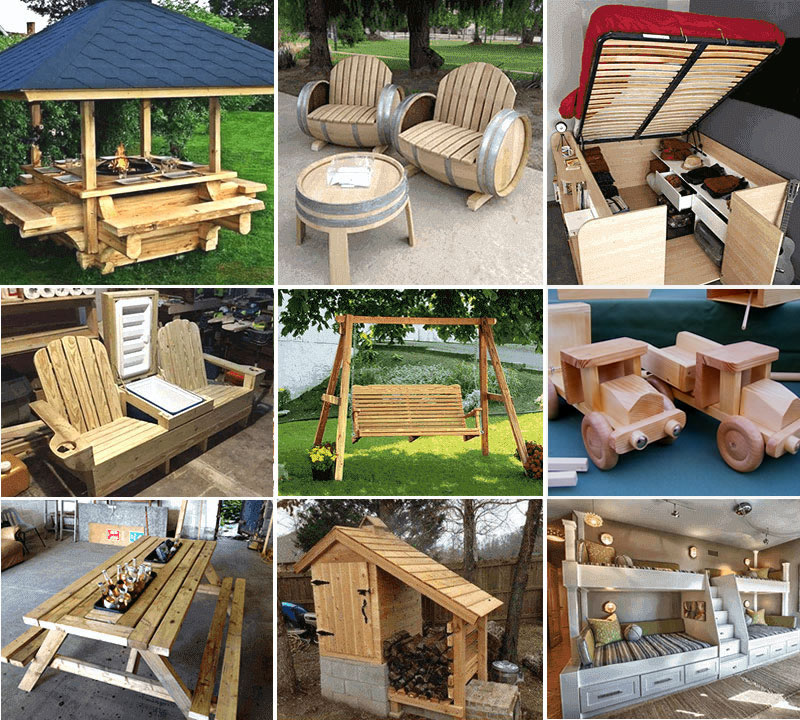Wood Glue 101: Everything You Need to Know
Wood glue is one of the most essential tools in any woodworker’s arsenal. Whether you’re repairing a broken chair leg, building a bookshelf, or crafting fine furniture, wood glue provides the strength, precision, and reliability needed to hold pieces of wood together for years. This complete guide covers everything you need to know about wood glue—types, uses, application techniques, drying times, and tips for perfect bonding.

👉 Click here to unlock 16,000+ DIY woodworking plans now
Why Use Wood Glue?
Nails and screws may hold wood together, but they can weaken the material and leave unsightly holes. Wood glue offers a cleaner, often stronger solution. When applied properly, wood glue can create a bond that’s even stronger than the wood itself. It fills gaps, strengthens joints, and creates a seamless connection.
Benefits:
- Invisible bonding
- Superior strength
- No need for nails or screws
- Works on all types of wood
- Easy to apply and affordable
Types of Wood Glue
Not all glues are created equal. The type of glue you choose can make a big difference in the strength, durability, and appearance of your woodworking project. Let’s explore the most common types:
1. PVA (Polyvinyl Acetate) Glue
This is the most widely used glue for woodworking, often referred to as “yellow glue” or carpenter’s glue.
Best for: Furniture, cabinets, general woodworking
Pros:
- Easy to use
- Non-toxic
- Strong bond on wood
- Dries clear or yellow depending on type
Cons: - Not waterproof unless labeled as such
- Short open time
2. Aliphatic Resin Glue
An advanced version of PVA glue, aliphatic resin glue offers better heat resistance and a faster bond.
Best for: Professional woodworking
Pros:
- Quick set time
- Strong bond
- Easy to sand
Cons: - Limited working time
- Not water-resistant unless specified
3. Polyurethane Glue
Known for its incredibly strong bond and ability to adhere to various surfaces.
Best for: Outdoor projects, mixed materials
Pros:
- Waterproof
- Bonds wood, metal, plastic, and more
- Expands to fill gaps
Cons: - Messy (expands while drying)
- Requires clamping
- Can stain skin or wood
4. Epoxy Glue
Epoxy is a two-part adhesive that creates a durable, water-resistant bond.
Best for: Filling gaps, high-strength applications
Pros:
- Extremely strong
- Fills large gaps
- Waterproof
Cons: - Needs mixing
- Short shelf life
- Longer curing time
5. Hide Glue
An old-fashioned glue made from animal collagen, available in liquid and solid form.
Best for: Antique repair, fine woodworking
Pros:
- Reversible with heat
- Long open time
- Good for traditional methods
Cons: - Weak waterproofing
- Requires warming for solid hide glue
🛠️ Ted’s 16,000 Woodworking Plans – Why You’ll Love It:
- 📚 16,000+ Ready-to-Build Projects – From small crafts to big furniture!
- ✂️ Step-by-Step Instructions – No guesswork, just follow and build.
- 🧰 Perfect for All Levels – Beginner to expert, everyone’s covered.
- 💰 Turn Projects into Profit – Build & sell your creations easily!
- 🔥 Limited-Time Deal – Grab it now at 90% OFF!


Choosing the Right Glue for the Job
Your glue should match the project’s requirements. Consider the following:
| Project Type | Best Glue |
|---|---|
| Indoor Furniture | PVA or Aliphatic Resin |
| Outdoor Furniture | Polyurethane or Epoxy |
| Antique Restoration | Hide Glue |
| Mixed Materials | Polyurethane or Epoxy |
| Crafts & Hobbies | PVA Glue |
How to Apply Wood Glue Properly
Correct application ensures a durable and lasting bond. Here’s a step-by-step guide:
Step 1: Prepare the Surface
- Make sure the wood is clean, dry, and dust-free.
- Smooth surfaces with sandpaper if needed.
Step 2: Apply the Glue
- Use a brush or glue bottle with a fine tip for control.
- Apply an even layer to both surfaces for maximum grip.
Step 3: Join and Clamp
- Press both pieces firmly together.
- Use clamps to maintain pressure while the glue dries.
- Wipe off any excess glue immediately with a damp cloth.
Step 4: Dry and Cure
- Most PVA glues require 30 minutes of clamping.
- Full cure takes 24 hours for maximum strength.
- Avoid stressing the joint until fully cured.
Common Mistakes to Avoid
Even experienced woodworkers can make errors with glue. Here are common pitfalls:
1. Using Too Much or Too Little Glue
Excess glue causes squeeze-out and mess. Too little may weaken the bond.
2. Skipping Surface Prep
Dirty, oily, or dusty wood won’t bond well. Clean surfaces thoroughly.
3. Insufficient Clamping
Without even pressure, glue won’t penetrate properly and may result in weak joints.
4. Working in Extreme Temperatures
Cold slows drying, while heat can dry glue before joints are aligned. Aim for room temperature.
5. Not Allowing Full Cure Time
Rushing the process can cause joints to fail over time.
Drying and Curing Times
Dry time varies depending on glue type, humidity, and temperature.
| Glue Type | Clamp Time | Full Cure Time |
|---|---|---|
| PVA | 30 min | 24 hours |
| Polyurethane | 1-2 hours | 24 hours |
| Epoxy | 5-30 min (depending on brand) | Up to 72 hours |
| Hide Glue | 1-2 hours | 24 hours |
Tip: Always read the label for exact drying recommendations.
How to Remove Dried Glue
Sometimes dried glue ends up where it shouldn’t. Here’s how to clean it up:
- PVA/Aliphatic: Use warm water and a scraper while glue is still soft. Sand dried glue.
- Polyurethane: Use acetone before it dries; sand or scrape once cured.
- Epoxy: Tough to remove—use mechanical methods like chiseling or sanding.
Pro tip: Use painter’s tape on visible areas before gluing to prevent mess.
Tips for the Best Bond Every Time
- Use clamps generously: Even pressure = stronger bond.
- Test fit first: Do a dry run to make sure everything aligns before applying glue.
- Keep a damp cloth handy: Wipe glue before it hardens.
- Don’t overclamp: This can squeeze out all the glue, weakening the joint.
- Store glue properly: Keep it in a cool, dry place and seal tightly after use.
Frequently Asked Questions
Q: Is wood glue stronger than screws?
Yes, in many cases, properly applied wood glue can be stronger than screws or nails, especially with good joint design.
Q: Can I paint or stain over wood glue?
Only if no residue is left. Sand off excess glue, or it will resist paint and stain.
Q: How long does wood glue last?
Unopened bottles can last 1–2 years. Opened glue can degrade after 6–12 months. Store in a cool, dry place to extend life.
Q: What happens if glue freezes?
Freezing can ruin some types of glue, especially PVA. Avoid storing in freezing temperatures.
Conclusion
Understanding wood glue is a cornerstone of successful woodworking. From choosing the right type to applying it correctly, mastering wood glue unlocks endless possibilities for strong, beautiful, and lasting creations. Whether you’re crafting a delicate jewelry box or building a rugged outdoor bench, the right glue makes all the difference.
By following this guide, you’ll not only avoid common mistakes but also gain the confidence to tackle any wood project with precision. Glue on, and build something great!
👉 Click here to unlock 16,000+ DIY woodworking plans now
